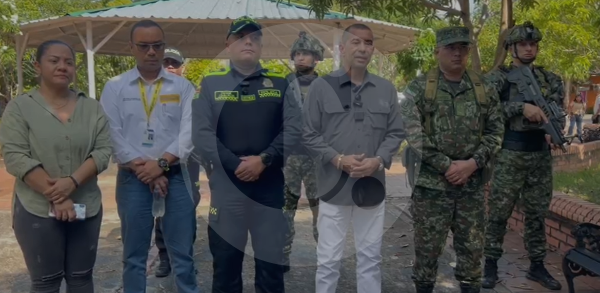
The Guevara Franchise: How Did Che’s Descendants Get Rich?
- Cuba
- agosto 12, 2025
- No Comment
- 83
HAVANA, Cuba – It all began when Giangiacomo Feltrinelli traveled to Havana in 1968, urgently summoned by Fidel Castro along with other major European publishers — or perhaps much earlier, in 1955, when the Italian, obsessed with far-left radicalism, founded the publishing house that bears his name and began releasing massive print runs, at the expense of his personal fortune, ranging from The Communist Manifesto to the writings of Lenin and Mao.
The Cuban Revolution drew him in, but it was the violence that had brought the rebels to victory that truly captivated him, leading him to become the founder of a terrorist group in Milan (the Partisan Action Group, GAP), which aimed to seize power in Italy by force and later extend guerrilla warfare throughout Europe — just as the Argentine Ernesto “Che” Guevara planned to do across South America and Africa.
Giangiacomo Feltrinelli was not among the first foreigners to arrive on the island as soon as the bearded rebels settled in Havana. But as a publisher, he came in 1964 with the idea of personally meeting the guerrilla leader — who, like him, had been born in 1926 — and proposing the publication of an autobiography that he himself would write, translate, and sell worldwide. It was an idea Fidel Castro did not reject outright, as the Italian’s reputation preceded him thanks to his coup in publishing the novel Doctor Zhivago, which earned Boris Pasternak the Nobel Prize in 1958.

Castro’s biography never came to fruition. Feltrinelli, on the other hand, a few years later, took home a far more lucrative deal — one that, this time, was not his own idea but that of the dictator in the making who, in their earliest personal exchanges, had struck him as “impulsive, ambitious, rhetorical, ideologically confused,” someone “who didn’t listen” and was “unfit to govern” as he “ran the country like a business.” (From Senior Service: A Story of the Giangiacomo Feltrinelli Publisher, by Carlo Feltrinelli, Tusquets, 1999).
The Birth of the Franchise
Castro was not exactly what Feltrinelli, in his idealism, had imagined — but he was exactly what suited him from the perspective of a successful businessman’s pragmatism and his most personal ambitions, the same ones that, while still very young, had led him to embrace communism despite being the owner of one of the largest fortunes in Italy. Before that, albeit for a very brief period, he had embraced Benito Mussolini’s fascism; in 1943, Mussolini had even spent a few days as a guest in one of the Feltrinelli villas in Gargnano, today a luxury hotel.
The death of Ernesto Guevara in Bolivia, in 1967, brought about a sudden change of plans — both for Feltrinelli’s publishing business and for the broader project of exporting guerrilla warfare, and, with it, the “Cuban Revolution” across the globe.
As soon as Fidel Castro had in his hands a copy of Che’s diary, sent to him by the Bolivian Minister of the Interior, he knew it could become a highly profitable business. At its core was the mass dissemination of the document, but its very short-term objective was to create a massive franchise built around the construction of a flesh-and-blood “superhero” — idealized and turned into an idol of the radical left — who could captivate young people worldwide, and especially wealthy patrons like Feltrinelli.
Castro saw in the events in Bolivia a unique opportunity. The body of his comrade-in-arms was not yet cold when he was already convening a veritable feast of publishers and publicists. Havana hosted the most prominent among them, from Maspero in France to Siglo XXI in Mexico. The Bolivian Diary of Che was fresh meat and sold extremely well, but Feltrinelli had added even more “value” to the “product” by using a photograph that Alberto Korda had given him for free — an image the Italian instantly recognized as iconic and turned into his star product, selling millions of copies in the form of T-shirts, flags, and souvenirs.
According to Korda, he himself never received a single cent in royalties, but the shrewd Feltrinelli lined his pockets — and made sure to send Fidel Castro his share of the profits.
He did this through the dictatorship’s diplomatic personnel, to whom he handed, every month, a briefcase full of cash — specifically Swiss francs, according to multiple witnesses (including Carlo Feltrinelli, who recounts it in the biography cited above). Both Castro and Feltrinelli justified it by claiming the money was destined for guerrilla movements in Latin America, as well as for the numerous political and ideological outreach projects created in those years — especially those arising from the First Tricontinental Conference (First Conference of Solidarity of the Peoples of Africa, Asia, and Latin America), held in Havana in January 1966, where important decisions were made and significant actions undertaken for leftist armed movements worldwide, with Cuba as their headquarters, through the Organization of Solidarity of the Peoples of Africa, Asia, and Latin America (OSPAAAL).
In reality, with those first Swiss franc transactions from Feltrinelli to Castro, carried out through embassies in Europe, what emerged was less an international political alliance than a business scheme. This arrangement gradually took shape and gave rise to the OSPAAAL, and later to the Cuban Institute of Friendship with the Peoples, as the main coordinators of the so-called Solidarity Groups with Cuba — with the dual purpose of supporting the Cuban dictatorship abroad, destabilizing governments through violence, and financially sustaining Castroism, whether by providing capital, intelligence, contacts, or even front men tasked with creating offshore companies in tax havens.
Thus, through the backing of solidarity groups, for example, the Havana International Bank (Havin Bank) in London was founded and continues to operate. Likewise, almost all Italian business ventures in Cuba — including the presence of certain Italians within the Castro family itself — trace their origins to these groups. It is no coincidence that the oldest and most important of them bears the name Giangiacomo Feltrinelli (the National Italy–Cuba Friendship Association, Giangiacomo Feltrinelli Circle of Salerno), which, together with the foundation of the same name, has been responsible for organizing numerous trips by Aleida Guevara March under the pretext of promoting her father’s work.
In August 1967, Feltrinelli began publishing the Italian edition of Tricontinental magazine, whose content was purely doctrinal. One issue included instructions for making a homemade hand grenade, while another explained how to convert a hunting rifle into a launcher for incendiary bombs.
Feltrinelli eventually became a guerrilla fighter himself. In 1970, he went underground, and in 1972 he died when the bomb he was preparing for an attack — intended to cut power to the entire city of Milan — exploded. (Feltrinelli and the Origins of Revolutionary Terrorism in Italy, Juan Avilés Farré, National University of Distance Education, Spain).
Feltrinelli–Guevara March: The Business Changes Hands
Castro’s opportunism drew the equally opportunist Giangiacomo Feltrinelli to Cuba. Likewise, it was this overall quality of the Guevara March family that changed the rules of the game in the 1990s when they decided to take part in the franchise — once Fidel Castro opened the doors to the capitalism he so often claimed to despise. The last thing he needed was someone reminding him of Che’s extremist ideas on the subject, although in the summer of 1997 he did make use of the discovery of the guerrilla’s remains in Bolivia to placate the communist orthodoxy and, at the same time, divert attention from the island’s internal crisis and his growing unpopularity.
A timely death had placed in Feltrinelli’s hands one of his best-selling and most valuable products — Che — and, similarly, the Italian’s death in the 1970s, followed by the collapse of the socialist bloc in the early 1990s (which had been the dictatorship’s economic lifeline), placed the Guevara March family in a position from which they had previously been excluded. This was justified under the pretext of what Ernesto Guevara had written in his “farewell letter” to Fidel Castro before leaving for Bolivia, where he stated that he left “nothing material” to his wife and children.

Nevertheless, Aleida March Torres, widow of Ernesto Che Guevara, had decided — behind Fidel Castro’s back — to strike a new deal with Feltrinelli’s heirs, by virtue of her role as executor of her husband’s works.
The negotiation was so successful that the money she received for the temporary transfer of copyright to the Italian group, plus retroactive payment for what had gone unpaid since Giangiacomo’s death in 1972, was enough for her to construct — in the middle of the “Special Period” — a majestic building equipped with state-of-the-art technology for the preservation and restoration of documents. It was built directly across from the same plot on 47th Street, between Conill and Tulipán in Nuevo Vedado, where the Guevara March family home once stood.
Although the institution, which partly operates as a foundation, was named the Che Studies Center, it never received Fidel Castro’s approval for an official inauguration.
Nor did he prohibit it, and there were no public reproaches for the “betrayal” of someone who had previously been considered disloyal for marrying a former member of Che’s security detail. However, he withdrew all “special favors” and his personal interest in the Guevara March family. Even so, he allowed them to continue their business activities.
It would have been far too scandalous for their disagreement to become known to the foreign press — along with the inner workings of both past and present agreements with the late Feltrinelli.

Beyond Feltrinelli
Today, the businesses of Aleida March and her children extend beyond the original sphere of the Feltrinellis, with whom they still maintain a rather lucrative agreement. The “Che Guevara” franchise also encompasses the Che Guevara Editorial Project, promoted by the Ocean Sur and Ocean Press groups but administered directly by Aleida Guevara March, who currently serves as the substitute for her nearly 90-year-old mother in running the Che Studies Center.
This role requires her to spend much of her time entangled in legal disputes over the economic benefits provided by the guerrilla’s ghost. One such case occurred in mid-2014, against the Cuban pharmaceutical company Labiofam, following the announcement of the launch of two fragrances named Ernesto (Che Guevara) and Hugo (Chávez). Complaints from the Guevara March family led to the project’s censorship after the state-owned group, which belongs to the Ministry of Agriculture, refused to share the commercial profits derived from the use of Che’s image.
There is also the well-remembered lawsuit by Aleida Guevara March against the Latin American far-left political group “Revolución o Muerte,” which had freely made available to the public, on its website, the full text of Critical Notes on Political Economy by Guevara. On that occasion, Che’s daughter claimed exclusive rights to the commercialization of a legacy she considers “private.”
The family made this position clear in documents sent to Paris in the mid-1990s for the registration, with UNESCO, of Ernesto Guevara de la Serna’s papers, with the aim of having them nominated for the World Memory Register. This constituted yet another way of securing funds, in addition to those already received from the aforementioned publishers.
Aleida March and her son Camilo Guevara (who died in 2022) submitted the application as “private heritage,” in coordination with Pablo César Groux Cañedo on behalf of the Bolivian government (which keeps the original Che’s Bolivian Diary in the vaults of the Central Bank of Bolivia, drawer A-7), with the sponsorship of Cuba’s Ministry of Culture and the support of Brazilian friar Frei Betto. In the “nominator details” section, it is stated that Aleida March de la Torre is the executor of the Documentary Collection and director of the Che Studies Center.
The Other Guevaras and Their Other Businesses
Compared with the large enterprise founded by Aleida March Torres (born in October 1936) — which generates millions of dollars a year solely from the use of images, international tours, conferences, and royalties — the rest of the ventures run by other members of the Guevara March family are insignificant.

There is no evidence to support the claim that the capital used to create companies in the names of Che’s children and grandchildren — some of which have come to light in recent days, including one registered just a year ago in the United States — comes from the economic profits generated by the franchise first exploited by Fidel Castro and later inherited by Ernesto Guevara de la Serna’s widow. But, without a doubt, the surname and the powerful influence of Che’s family circle have helped them find their way in an environment where it is extremely difficult to start a successful business without the sponsorship of an important figure within the Castro dictatorship.
Thus, in October 2017, Will Grant, the BBC’s correspondent in Cuba, devoted a report to the personal business of Ernesto Guevara March, Che’s youngest son, which consisted of organizing motorcycle tours of Cuba on Harley-Davidsons.

It was called La Poderosa Tours, named in reference to the 500cc Norton motorcycle with which his father traveled across the Americas.
At the time, it was said that he had used “foreign capital” to create the company and that he worked with “several Cuban state-owned companies.” The journalist also noted that tourists were drawn to the offer because of “the company’s link to Che Guevara.”
More recently, other businesses run by the children of Ernesto Guevara March have come to light, both in Spain and the United States.
Roberto Guevara Cañedo, a.k.a. “Obe,” appears as the sole administrator of Energías Renovables Guevara S.L., created in August 2020 and legally registered at Paseo de la Castellana, 194, 28046, Madrid, Spain. He has also been the founder and CEO of SolSystems, registered the same year.

Previously, he had worked as a financial analyst for a Mercedes-Benz dealership in Madrid, as well as a sales specialist for Jaguar and Land Rover in Spain. According to his social media profiles, he studied Business Administration and Management at the Universidad Europea between 2014 and 2019. On May 23, 2023, he acquired Spanish citizenship.
For his part, Marcos Guevara Cañedo, also a grandson of Che, is, along with his cousin Eyder Castillo Henríquez, the owner of the company Global Trades and Supplies LLC, founded on January 4, 2024, in Florida, and registered at 1424 NE Miami Place, 2504, Miami.
On his social media, Marcos describes himself as “passionate about renewable energy.” He graduated in Economics from the University of Havana (2013–2019) and completed master’s degrees in Business Administration at the Universidad Europea in Madrid between 2021 and 2022. He is the co-founder of SolSystems, together with his brother Roberto.

In Havana, he worked as a financial advisor for Grupo Kapan Internacional between June 2020 and March 2022. He has been friends, since university days, with Luis Guillermo de Cárdenas, grandson of Guillermo García Frías and heir to his businesses.
Along with his brother, he also appears as a “joint representative” (apoderado solidario) at NEXTVARA S.L. since August 2023. This is a small company, based in Barcelona, primarily dedicated to the sale and installation of solar panels (Source: Official Gazette of the Barcelona Mercantile Registry).
Through Global Trades and Supplies LLC, Marcos Guevara Cañedo runs a business selling construction materials in Havana. Both on his social media and on his mother’s — who coordinates sales in Cuba — he promotes the retail and wholesale marketing of granulated membrane, primers, waterproof paints, and “Italian products direct from the factory.”
Elena Cañedo Varona, mother of Roberto and Marcos, holds a degree in Economics from the University of Havana. In addition to selling construction materials, she rents out a luxury apartment to foreigners in Old Havana, promoted as Loft Puerto Habana, located just a few meters from Avenida del Puerto. She is the daughter of Rolando Cañedo, a race car driver from the 1960s who was champion of several competitions, including the Gran Premio Libertad. He was also a well-known go-kart racer. Elena was the lead specialist at SASA (Servicios Automotores S.A.), a company belonging to GAESA.
In short, none of the children and heirs of guerrilla fighter Ernesto Guevara de la Serna — a symbol of the most extreme and violent wing of the global left, and an accomplice to the “creative genius” who drove a once-prosperous country into misery — earn their living today by cutting sugarcane or doing “voluntary” work.
Contrary to what their father preached against capitalism and capital, they have chosen to part ways with his ideology and, ironically, have built a very lucrative franchise around the communist ghost they inherited. All with the necessary hypocrisy to make the world believe they are honoring his “legacy” — though without mourning his memory, and profiting from his death.
Sigue nuestro canal de WhatsApp. Recibe la información de CubaNet en tu celular a través de Telegram.





